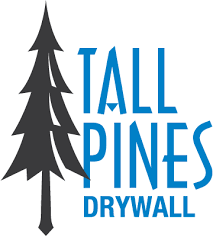DIY Drywall Repairs
Are you a tenant moving out? Are you looking forward to getting your damage deposit back? Do you have one small problem – there is a hole in your drywall the size of a head from a party you hosted last summer? Unfortunately, the landlord likely does not want your poster of Metallica that’s covering the hole for decoration. The tenants want you to feel like you are at home, but at the end of the day, it is not your property and needs to be returned to its original condition at the end of your agreement.
You should always tell your landlord about any damages to your drywall even if you are planning on fixing it yourself. Not only because it is the honest thing to do, you could be in violation of your lease. Furthermore, if you are not a licensed contractor the landlord might have to redo the job you did anyways because s/he has no idea if the work is up to code. On top of that your landlord will know something is up when s/he sees the paint colours do not match. It is not a good situation to be discreet, honesty is the best policy.
Always go to a professional for a large hole, but you got the go ahead to give fixing a minor hole yourself. Here is a how to from Tall Pines Drywall in Winnipeg, Manitoba to make sure your end of tenancy walk through goes smoothly and you get your money back!
Tools /Materials Needed
Drywall or putty knife (4”, 6”, or 10” for larger holes)
A mud pan for your joint compound if you are doing a larger repair
A sanding sponge
Sanding screen and holder
Drywall saw
Divots
Use a small drywall knife and spackle. Clean out the divots to make sure any loose material doesn’t get stuck in the spackle. Once any debris is out, the process is simple: put some spackle on your drywall knife and smear it into and over the hole. You then want to make it as smooth as you can – don’t worry, it is not critical to make it perfectly smooth. You can come back to it later and use your sanding sponge to smooth it out. Some landlords are kind enough to take patching the drywall as a sign of good faith and won’t require you to paint over the walls. It doesn’t hurt to ask.
Chipped Paint
You can just put a little spackle on your finger and rub it over top the area then wipe it off with a damp sponge. When it dries it will be ready to paint without any further action needed. Again, you should talk to the property manager or landlord about the paint colour. They should have extra buckets of paint that they used on your walls (and save you the hassle of guessing and buying the wrong one).
Small Holes
For holes about the size of a doorknob, place self-adhesive mesh over the hole. Use your drywall knife to cover the patch with spackle or joint compound. Feather the edges so it blends in with the wall. Let the patch dry then if you need to, apply a second coat of whatever compound you used. When happy you can then sand it smooth.
Larger Holes
Just like with divots, clean up the area surrounding the hole a little bit. You can sand it if you need to. You can use a drywall patch, which are available in any home renovation store., and stick it over top of the hole. Get your drywall knife and get a nice coat of joint compound on it and apply it over the drywall patch. Come back to sand and paint over the area when it is dry.
For jobs bigger than this, we highly recommend to both you and your landlord that you leave it to a professional contractor, especially if you aren’t one yourself. Save yourself the time and stress and hire a professional company like Tall Pines Drywall in Winnipeg, Manitoba to yield the best results possible and then some. Even if you are an avid do-it-yourselfer, professional drywall contractors have perfected this art and know all the tools and materials to use to produce the best results.
If you don’t takeaway anything else from this article, at least take away the realization that having the lines of communication open between tenant and landlord should always be open. If you are both able to define what is expected and allowed during your residency, there won’t be any blurred lines when you are moving out of the residence. Understand what the policies are for repairs and make your landlord aware when they are needed.
If they let you do repairs, these are all Tall Pines Drywall approved.
